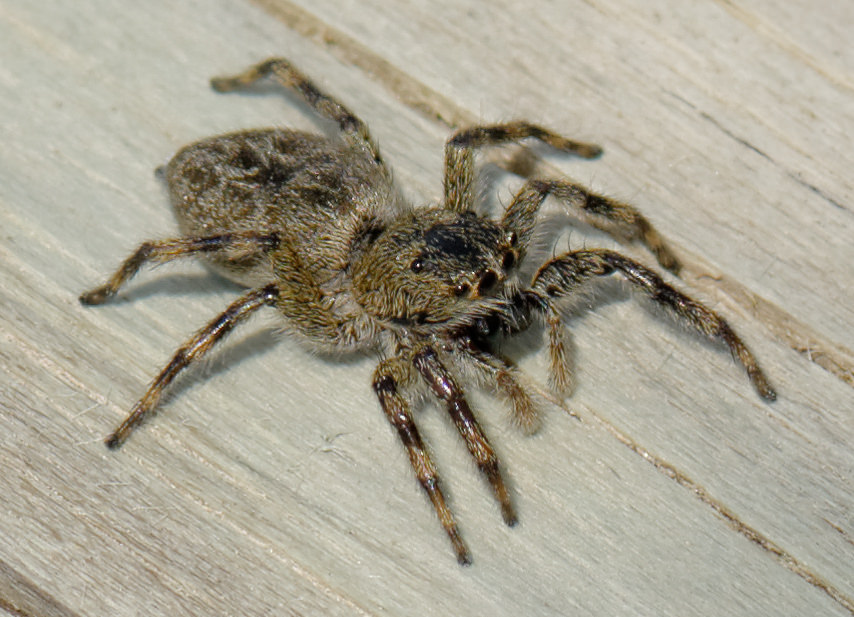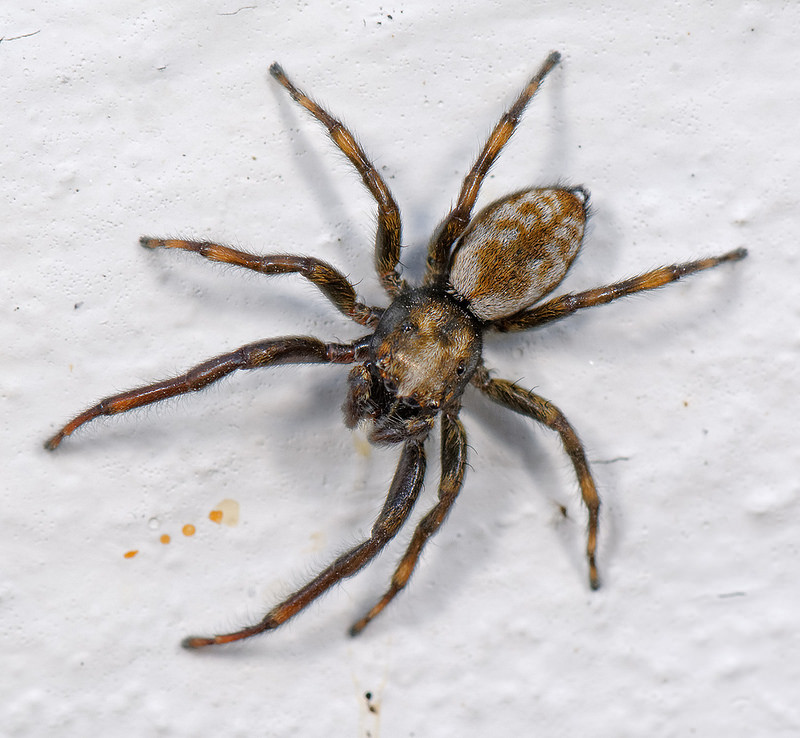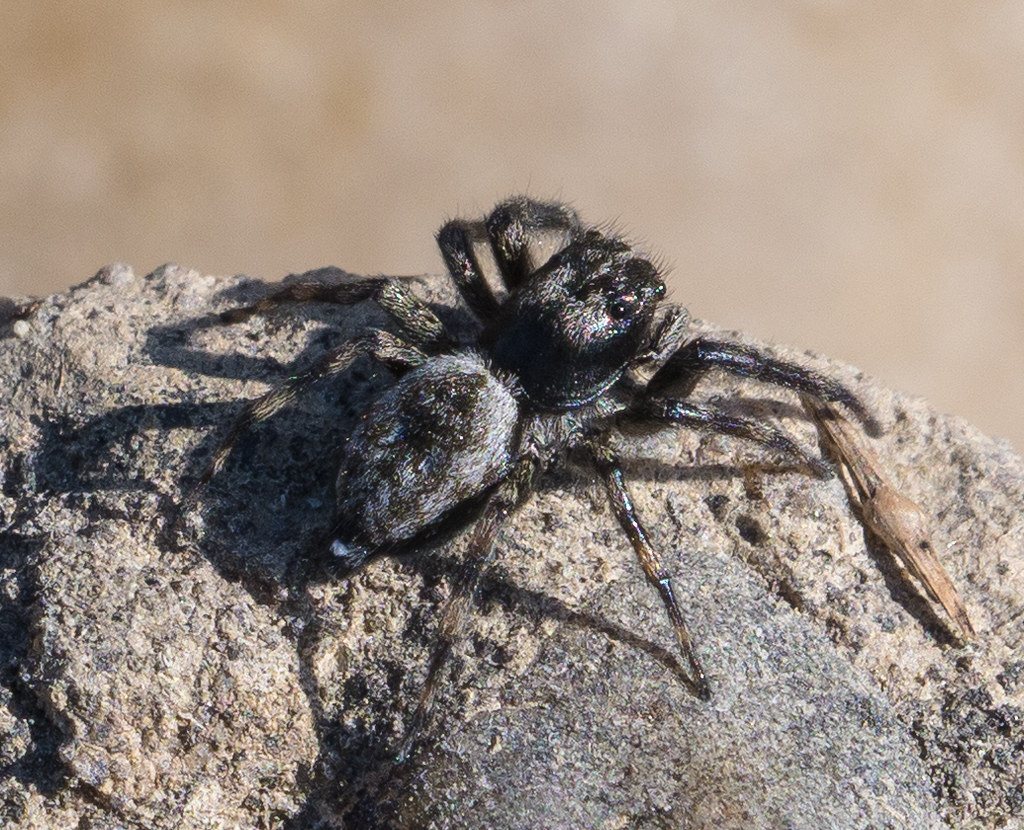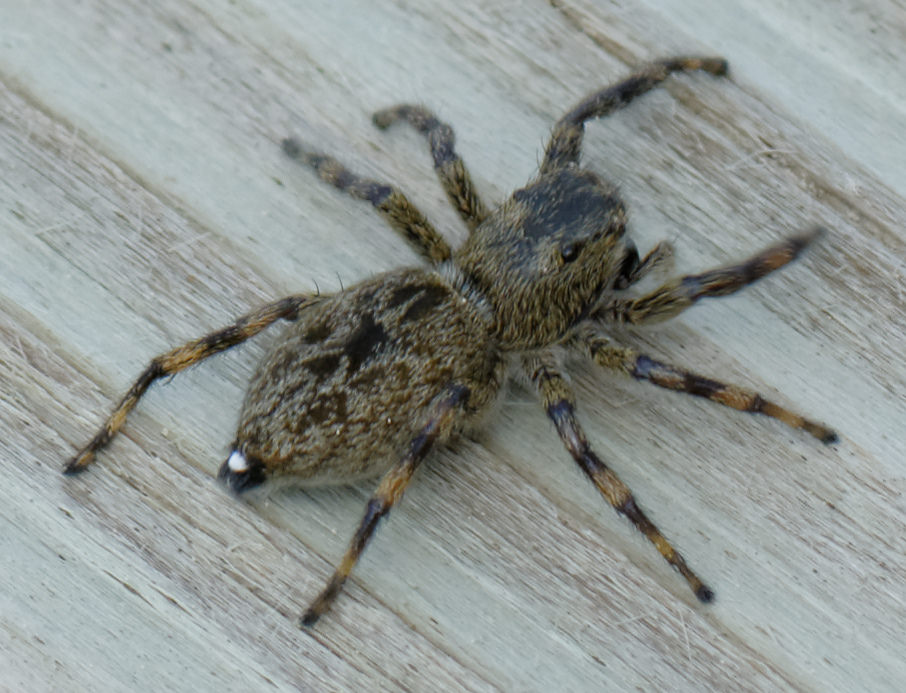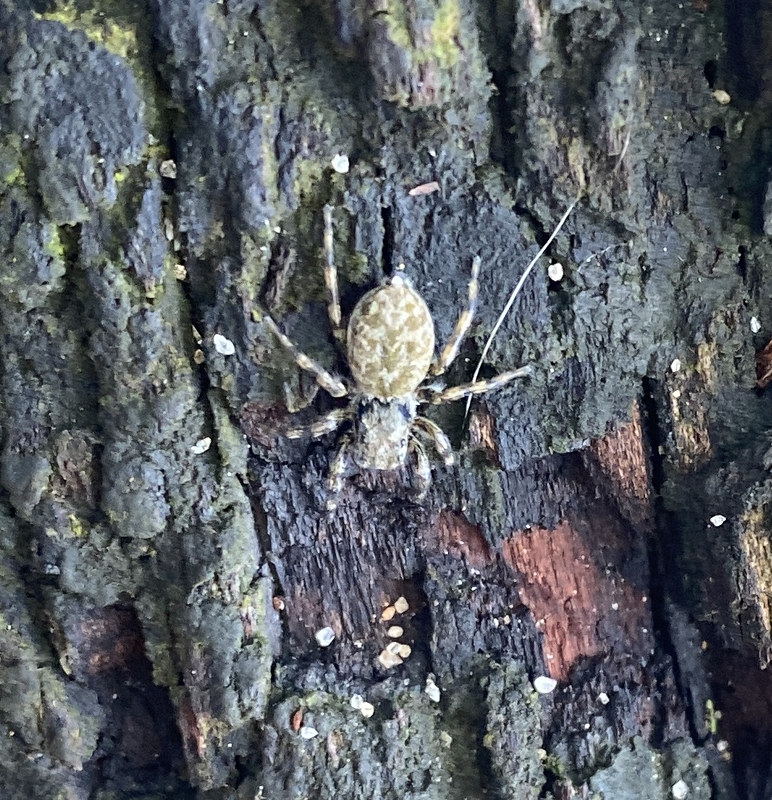Map Snapshot





4 Records
Status
This jumping spider species was accidentally introduced to North America from eastern Asia. It is the only member of its genus. (BugGuide) It was apparently first documented in the U.S. on the Massachusetts coast north of Boston. Notes from Steve Scholnick about our first record: "The species appears to favor rocky coasts and, although I wouldn't describe Scotland Beach as being rocky, there are rock seawalls around including at the base of the dock where I found this individual."
Seasonality Snapshot
Source: Wikipedia
| Hakka himeshimensis | |
|---|---|

| |
| Scientific classification | |
| Domain: | Eukaryota |
| Kingdom: | Animalia |
| Phylum: | Arthropoda |
| Subphylum: | Chelicerata |
| Class: | Arachnida |
| Order: | Araneae |
| Infraorder: | Araneomorphae |
| Family: | Salticidae |
| Subfamily: | Salticinae |
| Genus: | Hakka Berry & Prószyński, 2001[1] |
| Species: | H. himeshimensis
|
| Binomial name | |
| Hakka himeshimensis | |
| Synonyms | |
| |
Hakka himeshimensis is a species of the spider family Salticidae (jumping spiders).[1] H. himeshimensis is native to East Asia, but it has been introduced to the United States. The species is most commonly found in rocky coastal habitats.[2]
Description
[edit]
Both sexes have a body length of about 7 mm. The body and legs are uniformly dark brown. The body is covered with sparse lighter hairs. Between the eyes there are longer, reddish hairs that stand up diagonally. The chelicerae are brown and robust.[3]
Distribution
[edit]Hakka himeshimensis occurs in China, North Korea, Japan, Hawaii, and the Eastern United States.[2][3] It is not clear if there is a viable population in Hawaii, or if the found specimens represent incidental recent arrivals (although three specimens were collected over a period of 74 years).[3] It is likely that the species was accidentally introduced to the Eastern United States by maritime shipping.
Name
[edit]The genus name is derived from Hakka, a Chinese people with 70 million worldwide. Many members were brought to Hawaii as laborers on sugar cane plantations in the middle of the 19th century.[3] This is probably a reference to the species' origin in Asia.
Footnotes
[edit]References
[edit]- Berry, James W. and Jerzy Prószyński (2001). "Description of Hakka, a new genus of jumping spiders (Araneae, Salticidae) from Hawaii and east Asia". Journal of Arachnology 29(2): 201-204. Abstract - PDF
- Kaldari, Ryan, G. B. Edwards, and Richard K. Walton (2011). "First records of Hakka (Araneae: Salticidae) in North America". Peckhamia (94.1): 1–6.
Further reading
[edit]- Bösenberg, W. & Strand, E. (1906): Japanische Spinnen. Abhandlungen der Senckenbergischen Naturforschenden Gesellschaft 30:93-422.
External links
[edit]- Hakka himeshimensis at Worldwide database of jumping spiders
- Hakka himeshimensis video at archive.org
